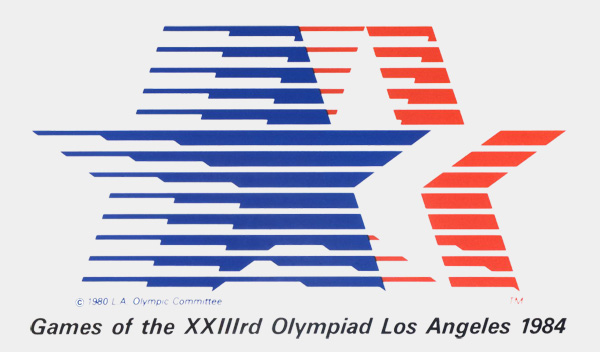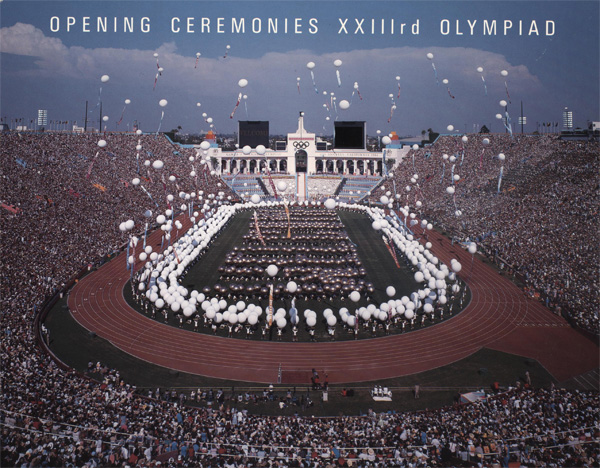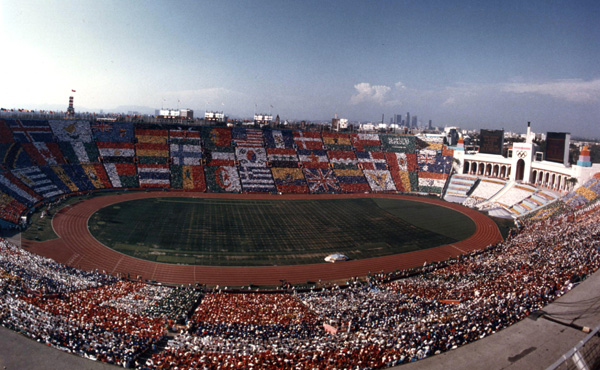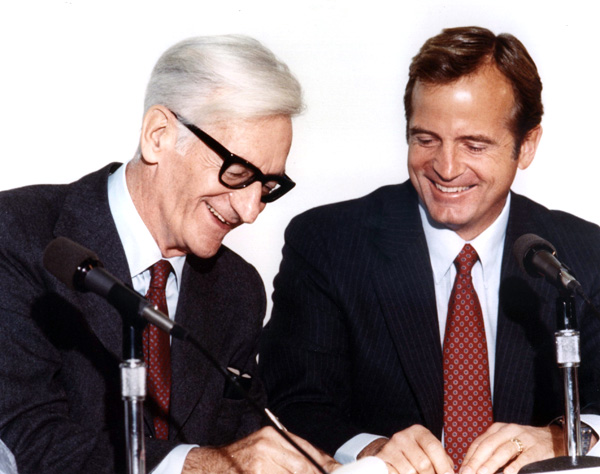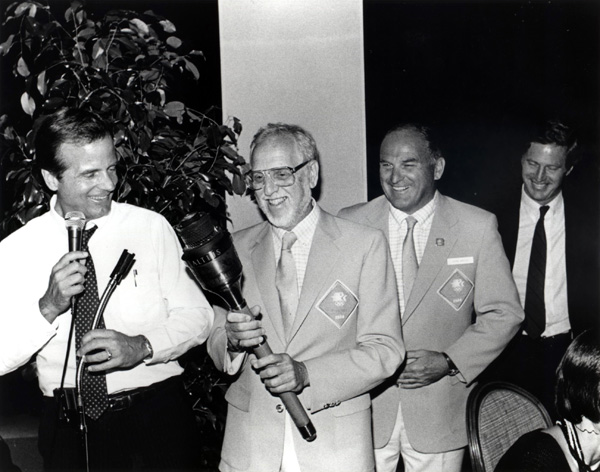1984 Olympic Games
The 1984 Olympic Games represented the culmination of decades of effort on the part of the SCCOG. The Games were widely acclaimed as the most successful ever held up to that time.
Following the Second World War, the SCCOG turned bidding for the Olympic Games into a Los Angeles civic ritual. While it is widely known that Los Angeles is one of only four cities to have hosted the Olympic Games twice (London, Paris and Athens are the others), it is less well-known that Los Angeles also has submitted the most bids for the Games, having submitted nine unsuccessful bids in the years leading up to the award of the 1984 Games, in 1978.
The SCCOG always presented bids for the Games on behalf of, and in conjunction with, the City of Los Angeles. Bids were submitted directly to the IOC for the 1948, 1952 and 1956 Games, when IOC rules permitted such submissions. Beginning with the bid for the 1960 Games, the IOC changed its rules to allow just one city per country to bid. For large countries such as the United States, this added a domestic round to the bidding process. In 1960, 1964, 1968 and 1972, Los Angeles submitted bids to the United States Olympic Committee, losing each time to Detroit as the official U.S. candidate. For the 1976 Games, Los Angeles was selected as the U.S. candidate for the first time but came in third to Montreal when the IOC made its selection. As the U.S. candidate again for the 1980 Games, Los Angeles came in second to Moscow.
This backdrop of nine unsuccessful bids set the stage for Los Angeles’ winning bid for the 1984 Games. With a bid committee led by local attorney, civic leader and SCCOG President John C. Argue, Los Angeles first had to overcome New York, which made a strong effort to become the U.S. candidate. In September of 1977, Los Angeles was chosen by the USOC by a vote of 55 - 39 as the official United States candidate for the 1984 Olympic Games.
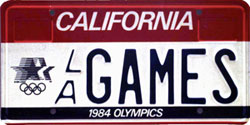 Advancing to the international round, Los Angeles found it was the only candidate in the race. Construction for the most recent Games (Montreal in 1976) had resulted in a deficit of approximately $1 billion. Concern over potential cost overruns prevented other cities from stepping forward, particularly in light of an IOC Charter requirement that the government of a host city should contractually commit to assuming all financial liability related to the organization of an Olympic Games. Los Angeles residents were sufficiently concerned that in April 1978 a cost-control measure was placed on the November 1978 ballot. Its eventual passage was widely expected and for all practical purposes it prohibited the expenditure of city funds on the 1984 Olympic Games.
In May of 1978, the IOC awarded the 1984 Games to Los Angeles, but on a provisional basis due to continuing concerns over who would be financially liable for their operation.
Months of negotiations followed among the City of Los Angeles, the United States Olympic Committee and the nucleus of what became the Los Angeles Olympic Organizing Committee. Los Angeles Mayor Tom Bradley and City Council President John Ferraro led the city government’s involvement in the negotiations. To show Los Angeles’ commitment to a private sector Olympic Games which would not use tax payer dollars, a blue ribbon committee was tasked with developing an acceptable contract with the IOC. The committee consisted of John C. Argue, Rodney Rood, David Wolper, Howard Allen, Justin Dart, William Robertson and Paul Ziffren. After a number of starts and stops in the negotiations, the USOC agreed to serve as a guarantor and the IOC agreed to allow a private committee to organize the Games. The agreement confirming this historic arrangement was signed on October 20, 1978 by IOC President Lord Killanin and Los Angeles Mayor Bradley at the White House in Washington, D.C. The first major decision of the Los Angeles Olympic Organizing Committee was to select a Chief Executive. Peter V. Ueberroth, a travel executive, was selected as President of the LAOOC in early 1979.
As he assembled the staff that would run the Games, he laid down several principles that would govern the Organizing Committee’s operations. Existing facilities were to be used whenever possible, thereby keeping expenses down. This included the use of university residence halls at UCLA and USC as Olympic Village sites. The only sports facilities that Los Angeles needed to build were a velodrome, a swim stadium and a shooting venue.
With government funding out of the question, corporate sponsors played a more significant role than at any previous Olympic Games. The LAOOC had 25 sponsors, many of whom were multi-national corporations and each of whom contributed a minimum of $4 million in cash and/or in-kind products or services. Several sponsors assisted directly with facilities for the Games, becoming title sponsors of the facilities in return for providing the funds for construction. The private sector approach resulted in a smooth running and fiscally sound management structure. Accomplished executives were chosen to serve as “commissioners” for each of the 21 sports and two demonstration sports on the 1984 program.
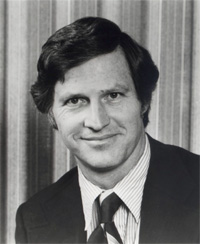
Harry L. Usher, Executive Vice President/General Manger
The run-up to the Games was not all smooth sailing, however. Skepticism was widespread in the early years among local taxpayers, many of whom feared a deficit. Then in May, 1984, the Soviet Union announced that it would not be sending a team to Los Angeles. When they were joined by more than a dozen of their communist allies, it was open to question whether the Games would be successful.
When the Games opened on July 28, 1984, the Soviet Union and 14 of its allies were absent. However, one of their allies – Romania, a major sports power – defied the boycott by sending its team to Los Angeles. China returned to the Games for the first time in more than 50 years. The ensuing 16 days of competition were considered a marvelous organizational success and the “Olympic Spirit” infected all of Southern California in addition to a worldwide television audience. The Organizing Committee’s creative use of television and sponsorship revenues was hailed as a new financial model for the Games, and LAOOC President Peter Ueberroth was selected by Time Magazine as its “Man of the Year.” Among the many innovations and memorable features of the 1984 Olympic Games were:
|


